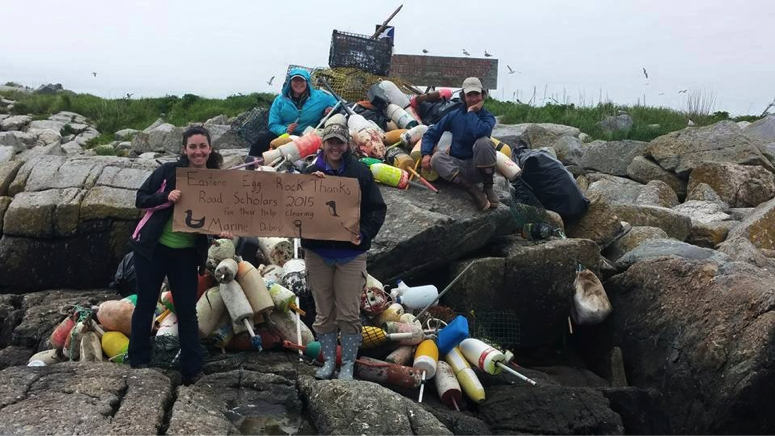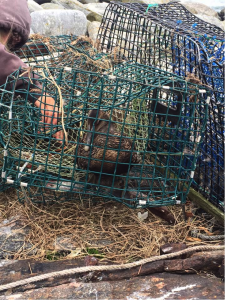Project Puffin Research Assistant Aubrey Alamshah spent weeks on Maine’s Eastern Egg Rock studying puffins and other seabirds, but learned something new about seemingly fun party decorations.
“Col (our Island Supervisor) hates balloons. Like a deep, fiery hate. She hates balloons with a passion. This was something I didn’t understand at first, in particular because I have always been pretty fond of balloons, or at least I was until I came to the island.
Eastern Egg Rock, and maybe all islands to some extent, bring to mind ideas of isolation, remote places relatively untouched by humanity. Places where you don’t have to worry about things like trash and pollution. Eastern Egg Rock, you would think, would be especially pristine being a bird sanctuary with hardly any buildings or people on it. However, if you read my first entry, you would know that assumption was very wrong.
As you can tell, Eastern Egg Rock has a little bit of a trash problem, primarily in the form of buoys and lobster traps. Every year, volunteers cart away piles and piles of broken buoys and traps that get left behind or lost by the lobstermen that frequent the ocean around the island. The Maine coast is one of the best places in the world to catch lobster, and to give the lobstermen credit, they are actually very conservation-minded when it comes to which lobsters they keep. But storms happen, the ocean isn’t always cooperative, and traps and buoys get lost or forgotten, at which point they inevitably end up washed ashore. The washed up traps especially can cause big problems for the wildlife on the island. They are traps, after all, and prove to be effective at trapping all kinds of creatures both above and below the water. While surveying tern nests, we found an Eider duck stuck in one of the washed-up lobster traps.
Had we not rescued her, she likely would have starved to death.
And for every bird we set free who knows how many we don’t, especially during the times we aren’t on the island at all. It’s not just lobster traps, either. We get all kinds of garbage like plastic bottles, bags, and fishing line washing up on the rocks all the time, all of which can be really bad news for the curious seabirds living there. You don’t have to be a lobsterman or even live near the ocean to have an effect on island wildlife, either. Anything that floats or flies can end up on our island, and that’s where balloons come in.
Balloons bay be great for parties, but they’re terrible for wildlife. Puffins, for example, are by nature curious creatures that will nibble everything from seaweed to fingers, and yes, balloons. The curious combination of deflated latex and string can easily get lodged in a puffin’s throat or wrapped around their little orange feet. That can easily become be a death sentence if there aren’t people around to rescue them. Other birds don’t fare any better. The supervisor from one of our tern islands reported losing several tern chicks after an inflated balloon blew in and scared the parents off their nests in the middle of a storm.
These are all things we can’t really fix on the islands. We can pick up trash when we find it, but it will keep causing problems as long as it keeps washing ashore. So maybe next time you see a lobster trap on the rocks, pick it up and throw it away, or if you see a trash can on the beach overflowing, squash down the garbage and cover it up. And maybe for your next party, keep the balloons inside where they can’t blow away. I know those seem like small, inconsequential things, but every time you do something like that you could be saving a life. I don’t know about you, but that makes me happier than even the brightest, cheeriest balloon.”




